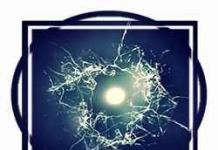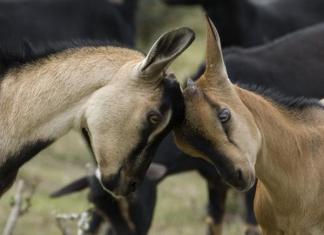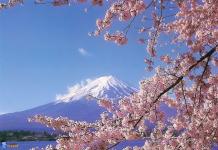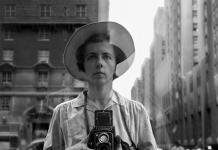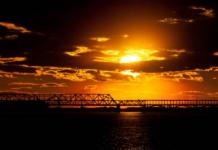38219 Improving your skills 0
Landscape, and especially sunset, is one of those subjects from which many amateur photographers have taken and are taking their first steps in photography. In principle, this is not difficult to explain - nature paints a beautiful picture, the photographer’s task is just to press a button and the photo, it seems, should automatically turn out interesting. We have already talked about photographing the natural landscape in the “Improving Knowledge” course. What is the difficulty of photographing a sunset? Let's figure it out.
The fact is that there is a downside to this natural phenomenon. Let's remember a children's toy - a kaleidoscope. Every time you look into its eyepiece, you see a new picture every time. But no matter how much you shake the kaleidoscope, you won’t see anything fundamentally new in it. It's the same with sunset photography. No matter how much you shoot, the plot is hackneyed and banal. Internet search engines turn up millions of images when searching for "sunset", most of them similar to this:
Well, what should we do now? Don't shoot sunsets at all? Of course not! I just recommend that you take your photography more responsibly, in this case you will have a chance to photograph the sunset in a truly beautiful and original way. And since you are reading this lesson, this is exactly the task you set for yourself.
Like all our lessons, we begin the analysis by considering the technical side of the issue.
Sunset photography equipment
The first difficulty is that sunset requires a good dynamic range on your camera. It is necessary to simultaneously work on both the light sky and the dark earth. Alas, only SLR cameras and the latest models of mirrorless system cameras can boast of this, and even then not all of them. But even on a full-frame camera (it is believed that they have the maximum dynamic range), it is very difficult to achieve simultaneous high-quality detailing of both the sky and the ground when shooting a sunset. Is it worth talking about soap dishes that confidently “paint” everything below the horizon “radically black”?
When shooting a sunset over water, this problem seems to disappear - the mirror of the reservoir reflects the sky and looks light. However, the banks fall even further into blackness.

The lens has a huge impact on the quality of photography. A critical parameter in this case is the glare resistance of the lens. When the sun enters the frame inside the optical system, the number of re-reflections of light from the surfaces of the lenses increases significantly, which is why the picture loses contrast and “blooms” with many sunbeams.

As you can see in this photo, the glare resistance is let down - there is a yellow “veil” around the sun and the photo is not as high quality as the author would like.
When shooting a sunset, a phenomenon very often occurs such as charge flow from “exposed” pixels to neighboring ones. This phenomenon is called blooming. The result is the sun “growing” in size and the appearance of a colored border around it.

As you can see, the sun has taken on a strange oblong shape - apparently, the glow of the clouds near the solar disk also had an effect. If you “unscrew” the levels all the way, you will clearly see the color component of the blooming - the green edging.

The above photo is, of course, extreme, but it shows why sunset photos are difficult to edit. However, there are plenty of people who like to “thicken things up” in this way and post their creation on the Internet. Don’t do this, I beg you, if you don’t want to hear a lot of critical arrows directed at you.
Setting up your camera for sunset photography
Which mode to photograph, what shutter speed, aperture and ISO sensitivity to set when shooting a sunset is a fairly common question asked by novice amateur photographers. I'll try to answer them. In principle, the general principles of exposure are not much different from those generally accepted in landscape photography, namely:
1. It is better to photograph a sunset in aperture priority mode (AV, A). There are several reasons. The most important thing is that each lens has a certain aperture range at which it produces the best image quality, usually f/5.6-11. Landscape (including sunset) is not a “DOF-dependent” genre (there is no need to separate plans with blur, as in a portrait), so you can safely clamp down the aperture.

When you clamp the aperture to 22 or more, the overall detail of the image decreases slightly, but the effect of diverging rays from the sun appears, this was discussed above - perhaps this will be a reason to sacrifice technicality for the sake of artistry. There is no point in shooting a sunset with an open aperture - the detail is low, the depth of field will be small and, most likely, not all objects will fall into the depth of field zone (although this may be an artistic intention - these are special cases). In principle, you can use a completely manual mode, manually setting the shutter speed as well, but this will take more time.
2. The shutter speed should be no less than one divided by the focal length (in film equivalent), this will reduce the likelihood of getting an unsharp shot due to hand shaking - this is one of the general principles of “field” photography. If you have a 50 mm lens, then a “safe” shutter speed will be 1/50 second, if 300 mm, then 1/300 second. This explains the need to use a tripod when shooting with a telephoto lens. The shutter speed is automatically selected by the camera when shooting in aperture priority mode. If the photo turns out to be too dark or too light, use the exposure compensation function, or switch to manual mode.
3. ISO sensitivity is the minimum possible, but at the same time, ensuring the absence of “stir”. Low sensitivity lengthens the shutter speed, but provides smoother tones and reduces noise. It is worth raising the ISO sensitivity only if you are shooting with a telephoto lens without a stabilizer or a tripod - in this case, the likelihood of blurring the picture due to hand shake increases. By increasing the sensitivity by 2 times, we reduce the shutter speed by 2 times.
4. It is impossible to give an unambiguous recommendation on what white balance to set; probably the most correct recommendation would be to shoot in RAW and then set the desired light temperature during post-processing in the editor, depending on your “vision” of the plot - some photographs will look better in cool tones, some kind of warm.
 5. Exposure metering. The thing is that we have to shoot the sunset against the sun. As a result, your camera's built-in light meter may let you down. The secret is not to point the camera at the sun, but to take exposure readings slightly above the sun's disk. Point your camera lens at this point (just make sure you can't see the sun in the viewfinder) and press the shutter button halfway. As a result, the camera will select the ideal shutter speed and aperture settings for sunset photography. Having fixed the selected values in this way, point the camera at the scene you want to photograph. When you are completely satisfied with the composition in the viewfinder, press the shutter button all the way down to take a photo with the previously selected exposure values. The sunset scene in the photo will be almost perfect. If the camera allows it, use the exposure lock button.
5. Exposure metering. The thing is that we have to shoot the sunset against the sun. As a result, your camera's built-in light meter may let you down. The secret is not to point the camera at the sun, but to take exposure readings slightly above the sun's disk. Point your camera lens at this point (just make sure you can't see the sun in the viewfinder) and press the shutter button halfway. As a result, the camera will select the ideal shutter speed and aperture settings for sunset photography. Having fixed the selected values in this way, point the camera at the scene you want to photograph. When you are completely satisfied with the composition in the viewfinder, press the shutter button all the way down to take a photo with the previously selected exposure values. The sunset scene in the photo will be almost perfect. If the camera allows it, use the exposure lock button.
Rules for the artistic side of a sunset landscape
1. Don't make the sun the only key subject in the frame.
The sun in photography has much greater value as a light source than as a subject - so use it for its intended purpose! Find a scene that would sparkle in the sunset light and photograph it. Many people shoot a sunset over the sea or a large body of water in windy weather, fixating on the sunny path and completely forgetting that the splashes from the surf in the backlight sometimes look simply magical! Find a pier, a dam against which the waves crash and try to photograph them - I’m sure it’s much more interesting than the boring sunny paths.

2. The most interesting sunsets happen when the weather changes.
Sunsets in good weather are monotonous, boring and present a simple picture like a white circle (sun) on a pink or yellow sky, and an almost black bottom. But when the weather changes, you can see clouds in the sky, often of bizarre shapes. When the sun sets below the horizon, these clouds glow bright red for a short time - don't miss this moment!

3. The tighter the aperture is, the longer the rays from the sun are.
Rays from a light source are produced due to the diffraction of light at the corners of the aperture hole. When the diaphragm is open, its shape is close to a circle, when closed it is close to a polygon (according to the number of blades). On the one hand, diffraction at a strongly closed aperture slightly reduces the detail of the image, on the other hand, it allows you to obtain an interesting optical effect.

4. Use a ND filter.
5. Photo composition.
In order to get a beautiful, memorable sunset photo, it’s not enough to choose the optimal exposure settings; the photo must have a storyline. Try experimenting with different focal lengths to capture a variety of landscape scenes. If you want the sun to take up more of the frame, use a lower angle when shooting. Correctly photographing a sunset means highlighting the center of attention in the frame. They can be mountains, a tree, a cliff, a person, etc. When choosing the center of the photo, be guided by the basic rules of composition in photography. For example, to highlight the main subjects, use the rule of thirds. This will allow you to competently build the composition of the photograph and make its perception as comfortable as possible for the viewer.

6. Photo processing.
If you are faced with the task of photographing a sunset, then be prepared for the fact that the photographs taken will require additional processing. After all, it is not always possible to provide ideal shooting conditions and select the necessary camera settings. Often, you subsequently have to make corrections to finished images in order to improve their quality.
Well, you’ll figure out the rest of the subtleties by practicing shooting. If you want to learn how to photograph a sunset, then don’t be afraid to use different camera settings, choose non-standard frame compositions and focal lengths. Thus, in order to photograph a sunset correctly, it is not enough just to know the basic rules of landscape photography, but also to be able to experiment, subject to subtle changes in nature. This is the main guarantee of successful photographs and a good mood from the work done.
All the photography to you!
The most successful shots, as most photographers will say, are taken at sunset and dawn. We've taken the experience of professional landscape photographers and compiled all their recommendations for sunset photography into one Nikon Master's Course. So, today photographers Vlad Sokolovsky, Stanislav Savin, Sergey Ryzhkov, Alexander Atoyan, Vadim Malyshev and Evgeniy Zhmak will help you learn once and for all to catch the last (or first) rays of the sun.
And, as usual, we are announcing a competition as part of the Master’s program: we are waiting for your best sunsets and sunrises in the comments! Our experts will choose the winner, and we will give him branded prizes from Nikon! We will also be glad to see your additions to the tips in the comments.
We remind you that we expect up to 7 photos from one participant indicating the equipment used in shooting. The competition accepts works shot on Nikon. And don't forget to add us as friends!
It's no secret that morning and evening hours (the so-called "regime time", "golden hour") are the most successful for landscape photography. And, in fact, there is no need to try to shoot a beautiful landscape at a completely unusual time (unless, of course, you have a specific creative idea or the weather is still favorable for this).
"Golden hour" is the period of time in the first hour after sunrise and in the last hour before sunset. At this time, the sky still has a beautiful reddish-golden hue (hence the name of this shooting time).
The closer the sun is to the horizon, the softer and more diffuse the light; less likely to get an under- or overexposed frame; With the right shooting point, less contrast but long shadows give the frames additional volume and highlight the relief.
In autumn, when the sun rises relatively low above the horizon, this period increases slightly, which gives additional time and chances to take a successful shot.
I prefer shooting at sunset: at dawn the sun still rises quite quickly, but at sunset it sets more slowly, and besides, there is a chance to catch the last enchanting “puff”.
But, in addition to the opportunity to see a beautiful sunset or sunrise, our task is to have time to capture it. And there are small, but, in my opinion, useful recommendations in this regard. I will try to list them as much as possible.
1. To determine the best time for shooting in your region, you can use the website http://www.golden-hour.com, http://www.timeanddate.com/sun or a similar application for mobile devices. Unfortunately, not a single resource can reliably tell you whether there will be a beautiful sunset or sunrise on that day. It's a kind of lottery.
2. Often in the morning the air is cleaner and more transparent than in the evening (it is clear that natural phenomena such as fog do not count). By evening, haze may appear in the atmosphere for various reasons.
3. It is necessary to arrive at the shooting point in advance if you do not know the area thoroughly. When the sun starts to rise or set, it will be too late to rush around looking for a good angle. If possible, try to familiarize yourself with the intended shooting location using other people's footage.
Sometimes the best light lasts just a few minutes! And by this moment you should definitely know where you can take the most successful photo. Well, if you have in mind several good, in your opinion, angles, you’ll even have to run :)
But if you are sure that you have chosen the most advantageous angle, stay until the end! Firstly, light, temperature, combinations of clouds, etc. will constantly change. And in the end you can end up with completely different variations of pictures. And secondly, after it seems to you that everything is over, there will be no more light, the last “puff” may happen. For a very short time the sun illuminates the sky, the light from the sky falls on the earth. Sometimes it looks just fantastic. Unfortunately, I missed two such moments in my life. Both of them occurred in Transcarpathia.
4. The technical part is very important: shooting in RAW, knowledge of various camera settings and the ability to quickly change white balance (I always shoot with manual WB settings via LiveView), using bracketed shooting mode (it’s no secret that even at dawn or At sunset there is still a fairly strong difference in brightness in the scene being filmed). In addition to the exposure bracket, gradient neutral gray filters are very useful in backlit situations (the main thing is not to overdo it with their density). And, of course, a tripod. At sunset, the light will become less and less, shutter speeds will lengthen, and for shooting with exposure bracketing it is simply necessary. At dawn, you will start shooting with fairly long shutter speeds, where a tripod is also necessary. Without it, you will have to “raise” the ISO, which will ultimately have a bad effect on image quality.
6. Pronounced rays appear as the aperture is closed. The larger the aperture number, the stronger the rays are visible. But do not forget about such a concept as diffraction. Everything should be in moderation. The number of rays from the sun is equal to the number of lens aperture blades (if the lens has a pair of them). If a lens has an unpaired number of aperture blades, the number of rays is multiplied by two.
7. If you are filming a sunset or sunrise in a fairly inaccessible place (for example, on a hill), from where (or where) you will need to walk back to the car/camp, take the time to take care of your clothes in advance and have a flashlight with you. In fact, a flashlight is a very useful thing, and at times simply necessary. Moving without it at dusk along a mountain path, even if it is not difficult, is very problematic.
And some examples with brief explanations and shooting parameters.

Solovetsky Islands, evening.
That very case when the light was really good for shooting. Very soft, warm. It was possible to shoot both the frontal view of the Solovetsky Monastery and the back of it in backlight with frequently changing shades of the sky.
Aperture: f/8
Exposure: 30
ISO: 400
Focal length: 26 mm
Camera: Nikon D610

Aperture: f/10
Exposure: 30
ISO: 560
Focal length: 29 mm
Camera: Nikon D610
Lens: AF-S VR NIKKOR 16-35mm f/4G ED
ND1000x Neutral Gray Filter

And the same place after a short time (talking about changing shades).
Aperture: f/8
Exposure: 61
ISO: 560
Focal length: 29 mm
Camera: Nikon D610
Lens: AF-S VR NIKKOR 16-35mm f/4G ED
ND1000x Neutral Gray Filter

South Bohemia, shooting at sunset. Shadows favorably emphasize the terrain, soft light helps highlight individual areas of the frame. And all together it gives volume and entertainment. Well, and the third shot - it was the soft sunset light that helped to tonally differentiate the upper and lower parts of the frame at the shooting stage.
Aperture: f/9
Shutter speed: 1/400
ISO: 400
Focal length: 220 mm
Camera: Nikon D610

Aperture: f/9
Shutter speed: 1/400
ISO: 400
Focal length: 360 mm
Camera: Nikon D610

Aperture: f/8
Shutter speed: 1/125
ISO: 400
Focal length: 320 mm
Camera: Nikon D610

About the last “puff”. It was evening like evening, sluggish, with a completely nondescript sky. The sun had already set behind the mountain, and I, without much hope, lingered on the pier to clear my conscience. And suddenly the sky began to light up. I only managed to take a few long exposure shots. By the way, unfortunately, the light never reached the “Three Sisters”, “Camel” and “Turtle” rocks, which are usually filmed here, and the sky behind them still remained “bald”.
Aperture: f/9
Shutter speed: 110
ISO: 400
Focal length: 16 mm
Camera: Nikon D610
Lens: AF-S VR NIKKOR 16-35mm f/4G ED
ND1000x Neutral Gray Filter

Carpathians, Gorgan ridge.
Aperture: f/10
Exposure: 30
ISO: 200
Focal length: 10 mm
Camera: Nikon D7000

High Tatras. The location was known, and so was the shooting point. All we could do was wait and hope.
Aperture: f/8
Shutter speed: 1/15
ISO: 200
Focal length: 24 mm
Camera: Nikon D610
Lens: 24-120mm f/4G ED VR AF-S NIKKOR

Belarus. Using a gradient neutral gray filter helped smooth out the brightness difference and dim the sun. Well, the tree located in front of the sun also had a positive effect to some extent on the lack of flare.
Aperture: f/10
Shutter speed: 1/125
ISO: 200
Focal length: 10 mm
Camera: Nikon D90

Kanaka. An example of using bracketing when shooting.
Aperture: f/8
Shutter speed: 0.6
ISO: 200
Focal length: 10 mm
Camera: Nikon D90
Gradient gray filter 4x

Boar Pass. We arrived at a completely unfamiliar shooting location specifically in the evening, which allowed us to take a closer look at the angles in advance.
Aperture: f/13
Shutter speed: 1/15
ISO: 100
Focal length: 11 mm
Camera: Nikon D90
Gradient gray filter 4x
Gradient neutral gray filter 4x + exposure bracketing of three frames
Stanislav Savin ( sav_in ):
Sunset is a favorite shooting time for most photographers. Whether you're a landscape photographer or a portrait photographer, the warm sunset light brings a magical mood to any frame.
1. Many photographers, especially beginners, are afraid to shoot against the sun. This is due to the fact that the setting sun, directed into the lens, inevitably produces glare, reducing contrast and deteriorating the technical quality of the image. But for me personally, the sun in the lens is not an enemy at all, but rather, on the contrary, an additional means of expression that can be used effectively. Moreover, sometimes I deliberately try to enhance the glare. In some images they help add air and naturalness to the frame.

Camera: Nikon D800

Camera: Nikon D800
Lens: AF-S NIKKOR 28-300mm f/3.5-5.6G ED VR

Camera: Nikon D800
Lens: AF-S NIKKOR 28-300mm f/3.5-5.6G ED VR
2. As a rule, a gradient filter helps to enhance glare, which, in addition to its main purpose - darkening the sky, makes it possible to add glare to the frame due to the presence of scratches on its surface, which inevitably form during its use and begin to refract the sun's rays. An interesting effect can be achieved by sprinkling a little water on the filter.
But much more often we want to get a “clean” photo, without unnecessary glare. In this case, an effective technique would be to block the sun with some object to minimize the refraction of light in the objective lens.

Camera: Nikon D800
Lens: AF-S NIKKOR 28-300mm f/3.5-5.6G ED VR

Camera: Nikon D800
Lens: AF-S NIKKOR 28-300mm f/3.5-5.6G ED VR
3. The glare of the sun and the ability to use it artistically is good. But never forget to constantly turn your head in search of the best angle and plot. Sometimes the most interesting things can happen behind your back! Good luck and creative success! :)

Camera: Nikon D800
Lens: AF-S NIKKOR 28-300mm f/3.5-5.6G ED VR
It is a rare landscape photographer who does not strive to reflect the enchanting magic of sunset light in his work. The sunset can transform any landscape and paint the sky in incredible colors. But capturing this beautiful phenomenon with a camera is not always easy. I'm sharing some of the techniques I use both when shooting and editing images.
1. Shooting technique and parameters
In any genre, the equipment used plays an important, but not exclusive role. The most professional camera does not produce good images on its own. Only the photographer himself can do this, and the equipment helps him achieve a technically high-quality result. Today, even amateur-level SLR cameras have very wide capabilities, so it makes no sense for a beginner to chase top-end camera models. But without a good, stable tripod, it’s hard to imagine landscape photography. I always use minimum ISO, medium aperture and manual focus. Photo quality must be RAW.

Aperture: f/9
Exposure bracketing. For the sky: 1/320. For ground: 1/80
ISO: 200
Focal length: 35 mm
Camera: Nikon D7100
2. Weather and state of nature
You can perfectly master all the technical techniques and the best equipment, but this will do absolutely nothing if there is no good lighting and plot. To capture a good sunset, sometimes you have to be patient and be willing to work hard. It's never a bad idea to check the weather forecast before planning your trip. But I adore nature mainly because it is completely unpredictable; you never know for sure what awaits you on the shoot. When nature presents an unexpected surprise, it is important to capture it in time and try to convey the atmosphere of this moment. It was difficult to shoot the panorama below: the light was changing literally every second, and the clouds were rushing overhead. There was a risk that the shots simply couldn’t be stitched together because the sky and light were too dynamic. In addition, it rained lightly on me, so it would be useful to always have dry wipes with you to wipe the lenses from drops.

Panorama of 4 vertical frames
Aperture: f/14
ISO: 100
Focal length: 17 mm
Camera: Nikon D800
3. Backlight
Of course, first of all, you want to capture the setting sun and the palette of colors that spills across the sunset sky. Here the photographer is faced with the problem of the narrow dynamic range (the ratio between the maximum and minimum measurable light intensity) that cameras have. Therefore, I almost always shoot with shutter speed bracketing, that is, I take several shots with a certain exposure compensation value. Most often, two frames are enough for me - one for the ground and the second for the sky. Both frames are then subjected to additional correction in Adobe Camera RAW.
The second problem when shooting against the light is the presence of sun glare or, as they are called, “bunnies”. The cheaper the optics, the more significant this problem is. If there are glares, I take an additional frame, covering the sun with my hand, and use it to eliminate glare in the main frame. I do this because I often fail to properly remove glare in a graphics editor.

Aperture: f/14
Exposure bracketing. For the sky: 1/8. For ground: 1/1.6
ISO: 100
Focal length: 17 mm
Camera: Nikon D800
4. Vertical panorama
When shooting, don’t forget about the dynamic foreground, which also looks great in the rays of the setting sun. To do this, I often resort to shooting so-called “vertorams”. To create them, I use two or three horizontal frames, which I then stitch together into one photo, close in format to a square.

Aperture: f/13
Exposure bracketing. For the sky: 1/40. For land: 1/5
ISO: 200
Focal length: 17 mm
Camera: Nikon D800
5. Don't miss the chance
I try to go to the shoot if there is even the slightest hope of some light among the thick clouds. If you have patience and gather all your courage, sometimes you can get an interesting result :)

Panorama of 7 vertical frames
Aperture: f/11
Exposure bracketing. For the sky: 1/20. For ground: 1/2.5
ISO: 100
Focal length: 16 mm
Camera: Nikon D7100
6. Telephoto lens
For landscape photography, a wide-angle lens is most often used. But if you want to emphasize the shapes and lines of the landscape, then you can’t do without a long lens. It is also indispensable when photographing the solar disk, which is about to disappear behind the horizon.

Aperture: f/14
Shutter speed: 1/10
ISO: 100
Focal length: 70 mm
Camera: Nikon D800
7. Twilight
Don't hide your camera right after the sun has gone down. For some time its rays will paint the clouds in bright colors. And when it seems to you that everything has calmed down and is too dark, try taking a few shots at long shutter speeds. Twilight is a great time for filming, and the camera is able to convey well the glow on the horizon, barely perceptible to the human eye, and its reflections on the ground.

Panorama from 2 horizontal frames
Aperture: f/8
Exposure bracketing. For sky: 10. For earth: 30
ISO: 400
Focal length: 17 mm
Camera: Nikon D800
1. Select a shooting location in advance
This advice is probably the most common, but no less true. The sunset is moving rapidly, as is the play of evening colors; you should not waste these minutes searching for a convenient shooting point and approaches to it. Decide in advance on the shooting point, focusing on the cardinal directions. There are now many apps that allow you to determine the time and direction of sunset. You should arrive a little early.

Aperture: f/3.5
Shutter speed: 1/320
ISO: 200
Camera: Nikon D810

Aperture: f/2.8
Shutter speed: 1/1250
ISO: 320
Camera: Nikon D810
Lens: AF-S VR II Zoom-NIKKOR 70-200mm f/2.8G ED
2. Look around
It is not always the very sight of the setting sun that is the only thing worthy of photography. During this regime time, the landscape around is flooded with soft warm light with long shadows emphasizing the relief. Look around - there may be a beautiful story right behind you.

Aperture: f/2.8
Shutter speed: 1/1250
ISO: 320
Camera: Nikon D810
Lens: AF-S VR II Zoom-NIKKOR 70-200mm f/2.8G ED

Aperture: f/4
Shutter speed: 1/100
ISO: 200
Camera: Nikon D810
Lens: AF-S NIKKOR 58mm f/1.4G
3. Bad weather can bring unique colors and textures.
If it's raining outside, there's no reason to despair. There are often cases when it is at sunset or before it that the rain subsides, and cloud breaks create fantastic pictures in the sky colored in sunset tones. Always be prepared.

Aperture: f/5
Shutter speed: 1/100
ISO: 640
Camera: Nikon D700

Aperture: f/2.8
Shutter speed: 1/500
ISO: 320
Camera: Nikon D810
Lens: AF-S VR II Zoom-NIKKOR 70-200mm f/2.8G ED
4. Sunset Panoramas with Exposure Lock
When shooting a sunset using the panorama method, it is worth understanding how differently different parts of the scene will be illuminated. To ensure the assembly is successful and your photo looks natural, use the exposure and focus lock button. Decide on the main subject, take measurements on it, and then, locking the focus and without changing the settings, shoot all parts of the panorama.

Aperture: f/5
Shutter speed: 1/320
ISO: 200
Camera: Nikon D810
Lens: AF-S VR II Zoom-NIKKOR 70-200mm f/2.8G ED
5. Manual temperature setting
Often the camera does not automatically recognize the required light temperature when shooting a sunset; do not forget to make adjustments: both during shooting and when digitally “developing” the frame in a converter. To maintain greater freedom of manipulation and convey all the nuances of light transitions, shoot in nef with the highest possible color depth.

Aperture: f/3.2
Shutter speed: 1/200
ISO: 160
Camera: Nikon D800
Lens: AF Zoom-NIKKOR 80-200mm f/2.8D ED
Plans in sunset scenes have significant differences in lighting. To compensate for shadow gaps, use bracketing or manual exposure when shooting on a tripod, and then combine the shot in HDR.

Aperture: f/10
Shutter speed: 1/400
ISO: 500
Camera: Nikon D810
Lens: AF-S VR II Zoom-NIKKOR 70-200mm f/2.8G ED
7. Filters
To shoot a sunset landscape, you most often have to get rid of filters. A faithful landscape assistant, a polarizing filter, does not help in this case and only eats up part of the light flux, shading the picture. Remove everything unnecessary from the lens. Perhaps only a gradient filter can be used to equalize the difference in illumination between the sky and the ground.

Aperture: f/5
Shutter speed: 1/100
ISO: 640
Camera: Nikon D700
Lens: AF NIKKOR 50mm f/1.8D
Neutral Gradient Filter

Shooting with bracketing
Aperture: f/5
Shutter speed: 1/100
ISO: 400
Camera: Nikon D700
Lens: AF NIKKOR 50mm f/1.8D
8. It's worth waiting a little
Don't rush to leave as soon as the sun sets below the horizon. Especially if there are many different clouds in the sky. There is a possibility that right now they will light up in red and gold colors, and the entire sky will be filled with scarlet color with characteristic dark foreground silhouettes.

Aperture: f/10
Shutter speed: 1/400
ISO: 500
Camera: Nikon D810
Lens: AF-S VR II Zoom-NIKKOR 70-200mm f/2.8G ED

Aperture: f/10
Shutter speed: 1/500
ISO: 500
Camera: Nikon D810
Lens: AF-S VR II Zoom-NIKKOR 70-200mm f/2.8G ED

Aperture: f/2.8
Shutter speed: 1/1600
ISO: 200
Camera: Nikon D810
Lens: AF-S VR II Zoom-NIKKOR 70-200mm f/2.8G ED
9. Shooting with a telephoto lens
It so happens that the distant part of the sunset sky contains everything needed to construct a picture. Shooting with long-focus lenses allows you to focus all your attention on a small area of the sunset sky. And also increase the size of the setting sun.

Aperture: f/3.2
Shutter speed: 1/1250
ISO: 320
Camera: Nikon D810
Lens: AF-S VR II Zoom-NIKKOR 70-200mm f/2.8G ED
We have all seen sunrises and sunsets many times in our lives. Sometimes the sun timidly illuminates only a few isolated clouds or a strip above the horizon. Sometimes the whole sky lights up from edge to edge, and the heart skips a beat in amazement. Anyone who has tried to capture such moments with their camera knows how difficult it is to capture the beauty of a sunset. In this article, I tried to systematize the knowledge necessary to successfully photograph sunrises and sunsets.
Time phases
The sunset itself usually lasts only a few minutes, and is part of the so-called “setting time”, when the sunlight is softest and most favorable for shooting scenes with natural light. Let's consider the main phases of operating time. For simplicity, I will only talk about sunsets; for sunrises everything is the same, only the phases of the operating time are in the reverse order.
As you know, midday light is white, very hard (if we consider summer time at mid-latitude). As the sun approaches the horizon, its rays penetrate more and more of the atmosphere, and the light gradually becomes warmer. The moment when the light changes its temperature significantly compared to midday can be considered the beginning of the regime time. Typically this is about an hour before sunset. This time is good for shooting scenes in which the main subject (for example, a mountain peak or building) is lit from the side. The light is still bright enough, so you can shoot handheld if you forgot to bring a tripod.

The main building of Moscow State University (Moscow), illuminated from the side by the soft light of the setting sun. ISO100 12mm f/11 1/2.5s, panorama from 2 horizontal frames
Then the light becomes warmer - first orange, then red, and then black (when the sun sets below the horizon). Having gone beyond the horizon, our luminary ceases to illuminate earthly objects, but can very effectively illuminate clouds. This is the time to shoot in backlight, with the camera pointed approximately where the sun has set. There is not enough light, you can still shoot handheld, but getting a sharp shot is quite difficult.

The RAS building (Moscow), backlit photography shortly before the sun sets on the horizon. ISO100 11mm f/8 1/20s
After sunset, when the clouds “die”, twilight sets in. Usually this time is unremarkable. There is very little light and shutter speeds can reach tens of seconds (especially when using filters), which makes handheld shooting impossible. But don’t rush to shut down your technique. Because sometimes at dusk, real magic begins - the water in the lake calms down, the sky begins to smolder with purple light, and it seems that everything around is filled with extraordinary calm and harmony.

Evening twilight on Lake Srednemultinskoye, Altai. The 30-second shutter speed smoothed out some of the slight ripples in the water, making for a calmer experience. The colors are real. ISO200 20mm f/8 30s, panorama of 2 horizontal frames
Features of shooting during normal time
One of the main problems when shooting during restricted hours is the lack of light. As a result, when shooting handheld, many frames may turn out blurry due to “shake.” The situation becomes more complicated when using light filters (for example, polarizing or gradient filters), which can increase the required shutter speed several times. The only effective solution to the problem is to use a tripod. If you don't have a tripod, you can try placing the camera on some hard surface; for example, this is how the following panorama was shot (here the camera was lying on a granite slab):

Sunset panorama in Victory Park (Moscow), reflected in a granite slab.
The main problem when shooting sunsets and sunrises is the large dynamic range (DD) of the scene being filmed. DD depends on the direction of shooting: maximum in backlight (the camera is aimed at the setting sun) and minimum in the opposite direction. Modern DSLR cameras, as a rule, easily cope with DD scenes when shooting scenes with side lighting. But to do this, you need to shoot in RAW and be able to accurately set the exposure. The RAW format stores significantly more information (compared to JPG, for example) and allows, to some extent, to “pull out” small overexposures and underexposures during processing.
An error in determining the exposure can lead to the loss of information and the appearance of serious “underexposure” or “overexposure” in the image, even when shooting in RAW. Therefore, I recommend shooting in manual mode (M) to avoid camera automation errors.

There's nothing complicated about it. Place the camera on a tripod; set the minimum ISO value; set the aperture so that there is enough depth of field (usually f/5.6...f/11); set the shutter speed according to the camera's automatic setting. Even in manual mode, SLR cameras have automatic exposure metering - look into the viewfinder and you will see a strip with the numbers -3,2,1,0,1,2,3+, and above it there is a line - this is the exposure meter (in your camera it may look different):
If the risk is above “0”, then the shutter speed you set coincides with the one chosen by the camera’s automation. If the risk is shifted towards negative/positive numbers, then the camera considers that the shutter speed is too short/long, respectively. First, set the shutter speed so that the risk is above “0”. Then take a test frame and look at its histogram. If the histogram is strongly shifted to the left, then increase the shutter speed, if to the right, then decrease it. Take the next test frame and look at the histogram again. And so on until you get a frame with a good histogram, without overexposure or underexposure.
Don't forget to keep an eye on the histogram of individual channels! When shooting during normal operation, there may be overexposure (clipping) in individual channels in the absence of overexposure in brightness. This leads to color distortion. When shooting sunsets/sunrises, there is often clipping in the red channel, and at dusk – in the blue channel.

Example of clipping in the red channel with slight overall overexposure
Shooting with bracketing
In the case of backlight, the situation with dynamic range is usually more complicated. It may turn out that at any shutter speed there are overexposures or underexposures in the frame - the camera cannot cope with too large a dynamic range. In this case, you can shoot with exposure bracketing. As an example, here are the original frames of the sunset shown above, taken at shutter speeds of 1/80, 1/40, 1/20, 1/10 and 1/5 s:

Here in the upper frames there are underexposures, and in the lower frames there are overexposures. I combined these frames by layering them with masks in Photoshop, so that the final work (see above) has no overexposure or underexposure. This method is called “tone mapping”, I will talk about it in detail in a future article.
Shooting with bracketing can be useful even if you don't know how to do tone mapping. If you made a slight mistake when determining the shutter speed, you can always be sure that at least one of the bracketed frames came out with the correct shutter speed. In addition, perhaps in the future you will learn how to do tone mapping, and then you can return to the sunset you shot earlier.
Shooting with gradient filters
In some cases, the DD of a scene can be reduced using gradient filters.

Singh-ray gradient filters (4×6”)
Such filters allow you to darken part of the image. For example, if the top of the image is significantly lighter than the bottom:

When shooting without a filter, a significant part of the sky turned out to be overexposed
then using a gradient filter you can darken the upper part, so that the image will not be overexposed:

A 3 stop neutral gray gradient filter with a soft edge was used to capture this shot. Lake Svetloe, Ergaki Natural Park, Krasnoyarsk Territory. ISO100 20mm f/11 1/15s
In some cases, a gradient filter allows you to shoot a scene in one frame, without bracketing. That's the beauty of these filters: one press of the shutter button, minimal processing, and the result is a very natural photo. However, gradient filters are not a panacea. In the case of a more or less complex boundary between dark and light areas of the scene, the gradient will darken not only the light area, but also the dark one. This is clearly visible in the photographs presented in this section, where along with the sky, the gradient darkened the mountains.
If you don't know where to start, buy one 2 stop neutral gray gradient filter with a soft border (see the left filter in the photo above). It will be useful in 90% of scenes, and at the same time it will not be visible in the pictures (in the sense that the picture will look completely natural). Filters of 3-4 stops are needed much less often, and you can easily go overboard with them, darkening the top part of the frame too much. 1 stop filters are usually completely useless.
The sun in the frame
An early morning or late evening photo can become much more interesting and dynamic if you include the sun in the composition. Here are some simple tips to help make your shot better.

Then in Photoshop you can overlay one frame on top of another with a mask, thus getting rid of glare:

Dawn on the Transverse Multa River, Altai (in this place the river flows under the stones). Here two frames with the same exposure are superimposed (see above) to get rid of glare. Then a frame with a lower shutter speed was superimposed to get rid of overexposure in the sky. All frames were taken at f/22 when the sun was just peeking out from behind the mountain. ISO100 20mm f/22 0.4s
There is one difficulty here - the sun can significantly reduce the contrast of the entire frame as a whole, and therefore simple overlay of frames will not work, because they will vary greatly in contrast. This problem can be avoided if you shoot at the moment the sun sets behind some object (for example, behind a tree, mountain or building), when most of the solar disk is covered by this object. Then the application will be painless.
Moment of balance
Shooting a sunset in the city has its own characteristics. A big city is full of light sources - building lights, lampposts, car headlights - and this light can be used to take the most effective shots. As the sun sets, its light gradually weakens, while the lighting in the city gradually turns on. When the intensity of sunlight and artificial light are approximately equal (30-45 minutes after sunset), a moment of balance occurs - the optimal time to photograph a sunset in the city. This balance does not last long, 5-10 minutes. At this time, the dynamic range of the scene is minimal, so you can shoot without exposure bracketing.

Sunset, 20 minutes until the moment of equilibrium, the city lights are just starting to turn on. Due to the large DD, a significant part of the image turned out to be underexposed. ISO200 90mm f/11 4min

At the moment of equilibrium, the brightness of natural and artificial illumination is equalized, the DD of the scene is minimal. Here is one frame, without bracketing. ISO200 100mm f/16 2min
Composition
A lot can be said about composition; it is a vast topic worthy of a separate article. Shooting sunset and sunrise is not special, the usual rules of composition apply here. However, it is worth considering common mistakes.
No matter how gorgeous the sunset is, you shouldn’t make the sky the main subject of the frame. The main subject should be earthy, and the sunset should only complement the frame, emphasizing the beauty of this subject. Imagine that there is no sunset, but instead there is a clear blue sky; the frame should remain interesting, albeit less spectacular.
A popular plot among fans: sea below, sunset above. No matter how beautiful it is, the plot is extremely hackneyed. The advice here is simple - include the foreground in the composition, for example, stones on the shore, a pier, a boat - anything that seems personally interesting to you. Aim the camera so that the horizon is higher than the middle of the frame - this will focus on the foreground rather than the sunset.

The foreground makes the photo much more expressive. Lake Svetloe, Ergaki Natural Park, Krasnoyarsk Territory. ISO100 24mm f/16 3.2s
When shooting silhouettes in backlight, the silhouette should not dominate - its area should not exceed 30-40% of the frame. Of course, the shape of the silhouette should be interesting in itself.

The setting sun behind three spiers: two of the Kremlin and one of the Ukraine Hotel. One frame, no processing. ISO200 300mm f/8 1/4000s
Preparing for shooting
Let's look at how you can prepare for shooting during restricted hours. Let's say that it is now the month of May, and you wanted to take a photo of the Moscow Kremlin during normal hours. First you need to study the selected object: find its photographs on the Internet and/or come to the center of Moscow at any convenient time and walk around it from all sides, choosing interesting angles. In the case of the Kremlin, one of the most spectacular (and popular) angles is obtained when shooting from the Patriarchal Bridge.
After we have chosen a shooting point, we open The Photographer’s Ephemeris program and see if this point is suitable for shooting during regular hours. We look for the Patriarchal Bridge on the map and put a marker on it. The program shows the direction of sunrise/sunset and moon:

As you can see, the direction towards sunrise approximately coincides with the direction towards the Kremlin (it is located under the inscription “Moscow”), which means that the scene we have chosen can be filmed at dawn. The sunset will be on the other side, so we won’t come to this bridge at sunset. Now we look at what time the sun rises. Let's say it's May 1st. In the program, the panel on the right shows the time of sunrise and sunset of our luminaries. In this case, the sun rises at 5:46.

As we already know, the picture will be most effective if you take it when the clouds are already illuminated by the awakening sun, and the Kremlin illumination has not yet turned off (the moment of balance), this is approximately 40 minutes before sunrise. It is clear that you need to arrive at the shooting point a little earlier, say at 4:45. All that remains is to wait for good weather and find the strength to get up at 4 o’clock in the morning. Most likely, you will have to come to the chosen place several times before you manage to catch a beautiful sunrise, but it is worth it.

Moscow Kremlin at dawn, view from the Patriarchal Bridge. ISO200 50mm f/11 10s
It is unlikely that you will want to limit yourself to one plot. It makes sense to make a list of scenes that you would like to film, and with each of them follow the described procedure - determine at what time and under what weather conditions they can be filmed. This list might look like this:
The Kremlin, view from the Patriarchal Bridge - an hour before dawn, clouds are needed (spring, summer)
The Kremlin, view from the B. Moskvoretsky Bridge - half an hour after sunset, clouds are needed (mid-spring, late summer, early autumn)
Moscow State University, reflection in the fountain - half an hour after dawn, after rain (beginning of spring, beginning of autumn)
and so on.
After compiling the list, all that remains is to wait for suitable weather. If you are shooting outdoors, then you will have to honestly go to the selected points every day in the hope of catching the light. But in the city, your task can be significantly easier, since humanity has learned to more or less accurately predict the weather, at least a day in advance. In my opinion, the most accurate and detailed weather forecast is provided by the Intellicast service. If the forecast says that there will be 20-80% clouds during normal hours (the “Clouds” column), then there is a good chance of beautiful light on that day. And if a thunderstorm is predicted a couple of hours before sunset, then you definitely need to go, because the light show can be simply grandiose, the main thing is not to forget to take an umbrella.

Publication date: 24.07.2015
What helps you distinguish a flat object from a three-dimensional one in a photo? Highlights and shadows on an object created by light. In this series of articles we will talk about one of the most important components of photography - lighting.
How to distinguish a three-dimensional object from a two-dimensional object on an image plane? Thanks to the light and shadow pattern: highlights and shadows.
Artistic photographs do not just capture some objects, but create a certain mood and atmosphere. Lighting can play a role in the plot of a photo and help convey certain emotions in the frame. It’s not for nothing that they say “look at things in a different light”, “see someone in a new light” - light allows you to see new details even in ordinary things. Artistic photographs do not just capture some objects, but create a certain mood and atmosphere. Lighting can play a role in the plot of a photo and help convey certain emotions in the frame. It’s not for nothing that they say “look at things in a different light”, “see someone in a new light” - light allows you to see new details even in ordinary things.


Outdoor photographers depend on the natural light that nature provides us. It is almost impossible to manage it and customize it for yourself. Yes, in portrait photography they use special diffusers and reflectors, and flashes. But all these measures can only be applied at short distances.
Obviously, the lighting will change throughout the day along with the position of the Sun in the sky. Also, lighting will depend on the weather and even the time of year.
What is the best time to take photographs to get expressive shots?
Scheduled time
When it comes to finding favorable lighting for shooting, the first thing that comes to mind is the term “setting time”. It is relevant for any shooting: landscape, portrait, travel photography. Photographers shooting on the street use the closed time period for their own purposes.
When does the shutdown happen? It is tied to two key points: the moment of sunrise and the moment of sunset.
Regular time is a period that includes 1 hour before sunrise and 1 hour after it. And vice versa: 1 hour before sunset and 1 hour after it. Of course, after an hour after sunrise, no one will suddenly turn off the good light. It’s just that the beneficial lighting will gradually disappear. The time frames indicated above are indicative only, and a lot depends on the location, time of year and weather, as well as on your lighting requirements.
Regular hours consist of two periods that differ in the nature of illumination: “blue hour” and “golden hour”.
Blue hour: 1 hour before dawn, 1 hour after sunset.

The day for a photographer begins about an hour before dawn. At this time, the night gradually gives way to pre-dawn twilight. It is already light enough to take photographs, and the light is soft, diffused and has a bluish tint. Therefore, this period is often called the blue hour.
The blue hour has one peculiarity: while everything on earth is in shadow, the sky is gradually painted with dawn colors. Objects located at a height (for example, mountain peaks) will also be colored, because they receive direct rays from the Sun, which for us has not yet risen.


If you are planning to photograph the dawn sky, you can start about half an hour before dawn, and in the case of evening photography, start after sunset. This will give you a beautifully colored sky and save you from serious dynamic range problems when the sky is not as bright as when the Sun is above the horizon.
In the evening, after sunset, there is also a blue hour. But everything happens in the reverse order: the sky gradually turns pale, the street becomes darker, and twilight sets in.
Golden hour: 1 hour after sunrise, 1 hour before sunset; sunrise and sunset.
So, the Sun has appeared above the horizon, and in the case of evening photography, it is about to set behind it. At this moment, the next characteristic period begins - the golden hour. At this time, the Sun, low above the horizon, gives a pleasant golden light, applying “gilding” to surrounding objects. In the morning and evening, sunlight travels a longer path through the Earth's atmosphere than during the day. Because of this, it dissipates, becomes softer, and does not cast such contrasting shadows as in the daytime. This benefits the photographs.


A novice photographer may get the impression that all these blue and gold watches are only needed by those who want to shoot beautiful sunrises or sunsets. This is wrong. As long as the Sun is near the horizon, its light is suitable for any type of photography, because during this period of time it perfectly conveys the volume and texture of objects.
 NIKON D810 / 35.0 mm f/1.4 SETTINGS: ISO 80, F1.4, 1/400 s, 35.0 mm equiv.
NIKON D810 / 35.0 mm f/1.4 SETTINGS: ISO 80, F1.4, 1/400 s, 35.0 mm equiv.
Of course, fixed time is also great for taking portraits. Since we are dealing with fairly diffuse and at the same time very effective lighting, very expressive shots can be taken during the golden hour.

Morning and evening operating hours. What are the differences?
The main difference is that in the morning and evening the Sun shines from different directions, because it sets and sets in different parts of the sky. Therefore, in the morning and evening the same place can be illuminated completely differently. This means that in some places it is more profitable to photograph in the evening, in others in the morning.
Often the morning blue and golden hours are accompanied by fog, and in nature also by abundant dew, frost or frost. These phenomena can also decorate your shots. In the evening hours they are usually not so strong, and they happen less often.
It's cold in the morning. Early in the morning it is usually much colder than in the afternoon or evening, so dress very warmly for the morning shoot, think about your comfort and health. Most likely, in order to be at the shooting location at the right time, you will have to leave in the dark. To navigate the area, take a flashlight with you. It is more convenient to use a headlamp: it will free your hands.
The peculiarity of early morning in the city is the absence of passers-by on the street: everyone is still sleeping. Consequently, it is possible to photograph even the busiest places in the city without people.
During the morning golden hour, the sunlight has a golden hue, while in the evening the light is reddish.

Choosing photographic equipment. What to shoot sunsets and sunrises with?
- Camera with a large matrix, wide dynamic range and manual settings. A large matrix will give low digital noise and high image quality. A wide dynamic range will allow you to show all the details in the image, both in the bright sky and in dark areas of the ground. Manual settings will help you make a shot with the desired brightness - during normal operation, automation sometimes makes mistakes in setting the exposure and white balance parameters. Based on these requirements, a DSLR camera would be an excellent choice. Even the most affordable models, for example, Nikon D3300, will do. More advanced devices (for example, Nikon D750 or Nikon D810), in addition to excellent image quality and ease of use, have another important characteristic - they are protected from moisture. This is especially true in the morning, when there is dew and fog all around.

- How to choose a lens? A novice photographer can also use a kit lens (included with the camera); it is quite suitable for such shooting. But its viewing angle may not be enough for landscape photography. Then you should take a closer look at wide-angle optics. For cropped cameras, a good choice would be the Nikon AF-S 10-24MM F/3.5-4.5G ED DX Nikkor lens, for full-frame cameras - Nikon AF-S 18-35MM F/3.5-4.5G ED Nikkor or Nikon AF-S 16 -35MM F/4G ED VR Nikkor. For portraits, it is more convenient to use fast lenses with a focal length of 35 mm or more. A classic choice would be a “fifty-kopeck” lens, that is, a lens with a focal length of 50 mm, for example, Nikon AF-S 50mm f/1.4G Nikkor. All of these lenses not only have good sharpness, but also cope well with backlit shooting without producing strong glare in the photo. This quality is also very important when shooting during restricted hours.

Some lenses (especially old and inexpensive ones) produce strong flare when shooting against the Sun. Such a glare can ruin the entire photo. Keep in mind that a lens hood does not provide absolute protection against flare, especially if we are shooting in backlit situations. Protective filters can also add glare to a photo. When shooting in backlit conditions, it is better to remove them from the lens.

- For landscape photography you need a tripod. Before dawn, the street is not yet as light as during the day. Let's add to this that landscapes are shot with closed apertures to obtain a large depth of field. This means that you will have to take photographs at long shutter speeds. Where there are long shutter speeds, there is a tripod: without it, you won’t get sharp, high-quality shots. But for portrait, street or reportage photography, there will be enough light if you photograph with open apertures. With these types of shooting, a tripod is often a liability.
How to take photos during regular hours? Practical advice
Observe nature. When was the last time you saw the sunrise? Not from the apartment window, casting a sleepy glance in his direction before going to work, but more consciously? Try to study this process in dynamics: you will see how quickly the colors of the sky and the lighting around change, how nature or the city wakes up. For the first time, you don’t have to take any photographic equipment with you at all - use your own eyes. This kind of visual experience is very useful for a photographer.
Plan your shoot. Find a place in advance, select suitable shooting points. Find out the exact time and place in the sky where the sun will rise or set. The Sun does not always rise strictly in the east and set in the west. Depending on the time of year, the Sun rises and sets in different places. Special smartphone applications will help you plan your shooting. The same can be done on this web page - just indicate on the map the approximate location of the shooting and select the desired date. The site will show in which direction and at what time the sunset and sunrise will be.
Check the weather forecast. If cloudy weather is promised, then we will not see any special lighting - the lighting will be exactly the same as on a cloudy day. Clear days or partly cloudy weather are good for shooting during regular hours.
The sun won't wait for you. Don't be late for the shoot! Remember that you will need at least 15 minutes to start shooting: you need to scout the place, select shooting points, and set up the camera. If you are preparing for a portrait shoot during limited hours, do not forget that both you and the model may be late. To be on the safe side, it is better to make an appointment an hour earlier.
Don't rush to photograph the Sun itself. The first thing a beginner does when he sees a sunrise or sunset is to start taking close-up photographs of the Sun and the beautiful sky. But look around: during restricted hours, all nature is transformed. Learn to find interesting stories! Let the sky and the Sun be just the background for your shots, and look for subjects on the ground. Forest edge, flowers, houses, mountains, river bank, details of the urban landscape - all this can be included in your frame.

Did you take a beautiful photo? Try to reshoot it after 10 minutes. Lighting during operating hours can change very quickly. Try photographing the same scene several times with a few minutes in between, and you will notice the difference. Take duplicates, compare the results and choose the best shots!
Consider the terrain! This advice is especially relevant for mountainous areas and cities. Both there and there there are many tall objects (mountains, tall houses) that can hide the moment of sunrise or sunset from us. Instead of beautiful lighting, we just get a shadow. On the other hand, if we correctly select the shooting conditions, we can use the terrain to our advantage. For example, catch the moments when the light falls beautifully on the same mountains or houses. Shooting planning will help to take such moments into account.
 Konstantin Voronov
Konstantin Voronov
Professional photographer with ten years of experience. Has been teaching for six years. A journalist by training, author of courses and educational articles on photography. Area of interest: landscape, subject, portrait photography.




